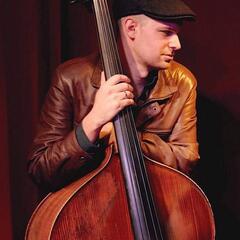Opera in Germany: A rich and proud tradition
There are few classical art forms so crucial to German cultural life as opera, which is ironic because opera is of course an Italian invention. The first Italian operas emerged at the end of the 16th century in Florence, and it would take nearly 60 years for the first German opera house to finish construction in Munich.
Nevertheless, Germany has a rich and proud opera tradition, and today the country boasts more than 80 opera houses, the most in the world. Let’s take a look at some of the most famous of them.
The Berlin State Opera
The German capital of Berlin is home to not one but two of the most prestigious opera houses in Germany. The older of the two, the Berlin State Opera (Staatsoper Unter den Linden) was commissioned way back in 1741 by King Frederick II of Prussia and served for many years as the court opera for the Prussian nobility.
The Berlin State Opera has seen many famous conductors ranging from Richard Strauss to Wilhelm Fürtwangler, and it was the site of the premiere of Alban Berg’s Wozzeck, one of the most important and innovative German operas of the 20th century.
Komische Oper Berlin
Komische Oper Berlin was constructed in 1892 and reflects the values and fads of the unique age in which it was constructed. The direct translation of its name to “comic opera” is misleading because Komische Oper does not just play comedies, but rather specialises in operetta: a lighter, less ponderous version of opera that is the precursor to the 20th-century musical.
Berlin came to be one of the main centres of operetta in the 1920s, where it blended with cabaret and burlesque and took on elements of jazz music, as popularised by composers such as Kurt Weill.
Bayreuth Festspielhaus
We’ve been beating around the bush for a while, but sooner or later, any discussion of German opera must touch on the towering and controversial figure of Richard Wagner and the monument he built for himself in the form of the Bayreuth Festspielhaus.
Wagner represents in many ways both the pinnacle and extreme of Romantic-era thought: his works were epic and unprecedented in scale (a complete rendition of his most famous work, Der Ring des Nibelungen, requires a performance time of around 15 hours), and his glorification of German mythology and thinly veiled anti-Semitism would make his works favourites of the Nazis.
The construction of the Bayreuth Festspielhaus allowed Wagner to realise all his wildest idiosyncrasies and satisfy his urge to micromanage even the minutest detail of his operas. For example, the orchestra pit at the Festspielhaus is unique in that it is completely hidden from the audience and mostly located directly underneath the stage.
Although this makes communication between orchestra and singers very difficult, it does allow the audience to focus all of their attention on the on-stage action, and it also compensates for the natural disparity in volume between the orchestra and soloists.
Cologne Opera
Compared to many of the opera houses in Germany the one in Cologne, constructed in 1957, is positively modern. It is an interesting phenomenon that, despite welcoming travelling opera companies since the 18th century, Cologne had no designated opera house until 1902.
The Cologne Opera captured headlines in 2006 when a pairing of director Robert Carsen and conductor Markus Stenz managed to pull off a staging of Wagner’s entire “Ring” cycle – which, as mentioned above, takes around 15 hours not including breaks – in just two days.
Even before this, the Cologne Opera House had catapulted its way into the world's consciousness in 1975 as the site of Keith Jarrett’s acclaimed live recording, “The Köln Concert”, which, with more than 3,5 million sales, is both the best selling solo jazz album and the best selling piano album in history.
Frankfurt Opera
The first opera held in Frankfurt was all the way back in 1698, but it wasn’t until 1782 that the Frankfurt Opera Company settled in their first permanent venue, the Comoedienhaus. The Frankfurt Opera Company has premiered works by many of the most prominent composers of the 20th century, including Arnold Schönberg, John Cage, and Carl Orff’s infamous neo-Renaissance masterpiece Carmina Burana.
The home of the Frankfurt Opera Company was destroyed in World War II, and the reconstructed building was badly damaged by fire in 1987. However, the reputation of the Frankfurt Opera has still managed to flourish, as evidenced by its receiving Opernwelt’s “Opera House of the Year” award seven times since 1996, most recently in 2023.
Semperoper Dresden
The Dresden Semperoper, which houses the Saxon State Opera as well as the Saxon State Orchestra and the Semperoper Ballet, is one of the most prestigious opera houses in the world.
Originally constructed in 1841 in a bewildering blend of Renaissance, Baroque, and Corinthian styles, the Semperoper had the multiple misfortunes of being destroyed by a fire in 1869, demolished by Allied bombing in 1945, and heavily damaged when the Elbe River flooded its banks in 2002. Nevertheless, it stands tall and proud today as one of the most beautiful and revered opera houses in Europe.
Bayerisches Staatsoper
The final stop on our opera house tour is the National Theatre in Munich, home to the Bayerisches Staatsoper. With a history dating back to 1653, the Bayerisches Staatsoper has for centuries premiered works by many of the opera world’s leading composers, from Wolfgang Amadeus Mozart and Antonio Salieri in the 18th century to Richard Wagner and Alexander von Zemlinksy in the 19th century, and Richard Strauss and Paul Hindemith in the 20th century.
More recently, it was deemed Opera House of the Year in 2014 by the magazine Opernwelt, signalling that the commitment of the Bayerisches Staatsoper to excellence and tradition is likely to endure far into the 21st century as well.



COMMENTS
Leave a comment